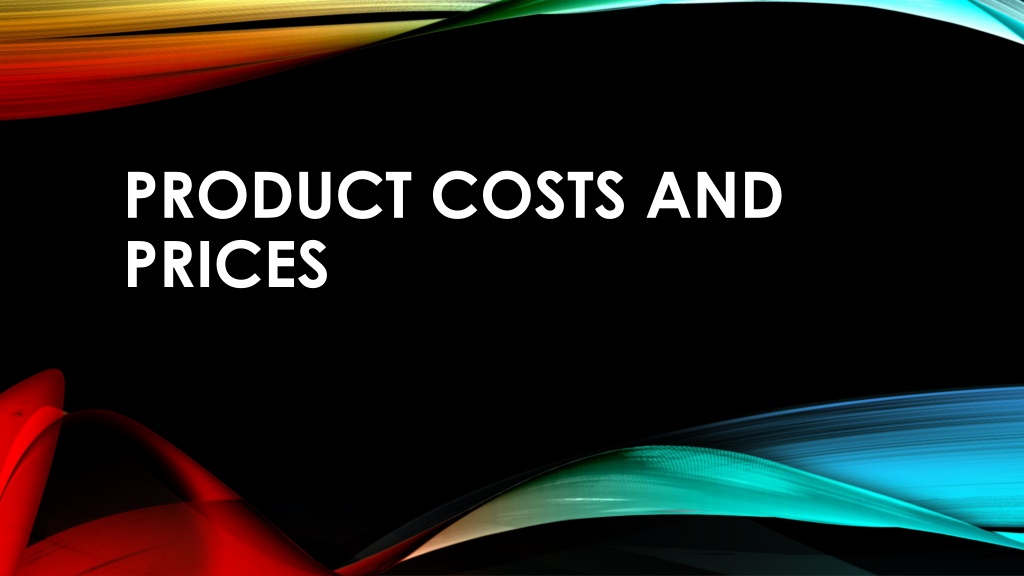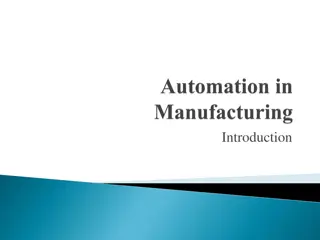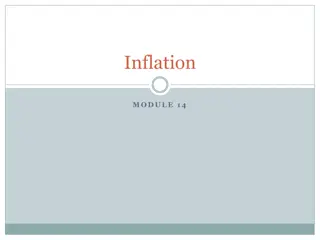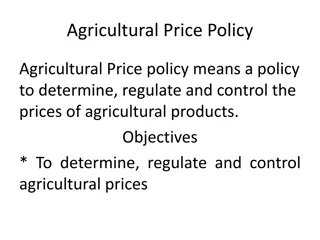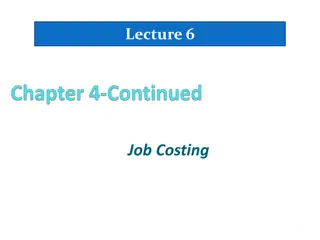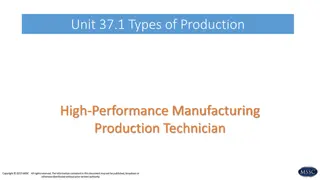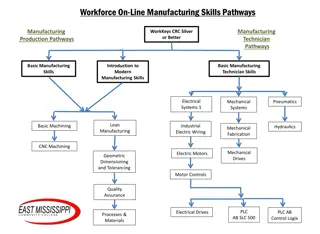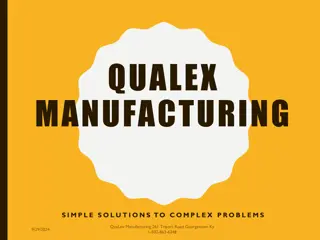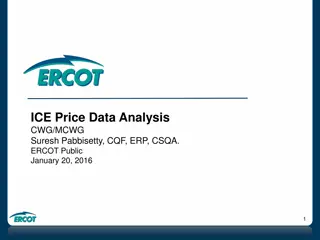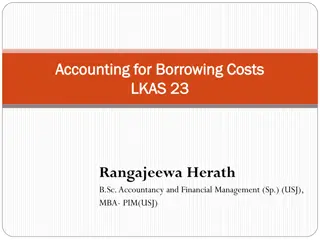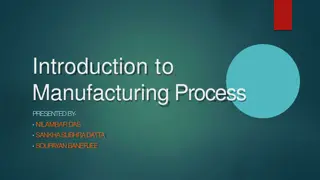Understanding Product Costs and Prices in Manufacturing
Product costs are expenses incurred to create a product for sale, including direct material, direct labor, and manufacturing overhead. Direct material refers to raw materials used for production, while direct labor includes wages for workers directly involved in manufacturing. Manufacturing overhead covers indirect costs like materials not directly traceable to products, labor not involved in production, and other factory-related expenses. An example breaks down costs for a table manufacturer, showcasing how these elements contribute to the total product cost.
Download Presentation

Please find below an Image/Link to download the presentation.
The content on the website is provided AS IS for your information and personal use only. It may not be sold, licensed, or shared on other websites without obtaining consent from the author. Download presentation by click this link. If you encounter any issues during the download, it is possible that the publisher has removed the file from their server.
E N D
Presentation Transcript
PRODUCT COSTS AND PRICES
WHAT ARE PRODUCT COSTS? Product costs are costs that are incurred to create a product that is intended for sale to customers. Product costs include direct material (DM), direct labor (DL) and manufacturing overhead (MOH).
UNDERSTANDING THE COSTS IN PRODUCT COSTS Recall that product costs include direct material, direct labor, and manufacturing overhead. The three are detailed below: 1. Direct material Direct material costs are raw materials purchased that go directly into producing the products. For example, if Company A is a chair manufacturer, an example of a direct material cost would be the wood used to make the chairs. 2. Direct labor Direct labor costs are the wages, benefits, and insurance that are paid to employees who are directly involved in manufacturing and producing the goods. For example, workers on the assembly line or those who use the machinery to make the products.
UNDERSTANDING THE COSTS IN PRODUCT COSTS 3. Manufacturing overhead Manufacturing overhead costs are indirect factory-related costs that are incurred when producing a product. Manufacturing overhead costs include: Indirect material: Indirect materials are materials used in the production process but are not directly traceable to the product. For example, glue, oil, tape, cleaning supplies, etc. are classified as indirect materials because it would not be possible (or not cost-effective) to determine the exact cost of the materials that go into the production of a product. Indirect labor: Indirect labor is the labor of those who are not directly involved in the production of the products. An example would be security guards, supervisors, and quality assurance workers in the factory. Their wages and benefits would be classified as indirect labor costs. Other costs such as factory utilities, lease, and insurance.
EXAMPLE OF PRODUCT COSTS Company A is a manufacturer of tables. Its product costs can include: Direct material: The cost of wood used to create the tables. Direct labor: The cost of wages and benefits for the carpenters to create the tables. Manufacturing overhead (indirect material): The cost of nails used to hold the tables together. Manufacturing overhead (indirect labor): The cost of wages and benefits for the security guards to overlook the manufacturing facility Manufacturing overhead (other): The cost of factory rent and cost of factory utilities.
EXAMPLE For example, Company A produced 1,000 tables. To produce 1,000 tables, the company incurred costs of: $12,000 on wood $2,000 on wages for the carpenters and $500 on wages for the security guards to overlook the manufacturing facility $100 for a bag of nails to hold the tables together $500 for factory rent and utilities Total product costs: $12,000 (direct material) + $2,000 (direct labor) + $100 (indirect material) + $500 (indirect labor) + $500 (other costs) = $15,100 total product cost.
EXAMPLE Therefore, Company A incurred total product costs of: $15,100 to produce 1,000 tables, or a unit product cost of $15,100 / 1,000 = $15.10.
